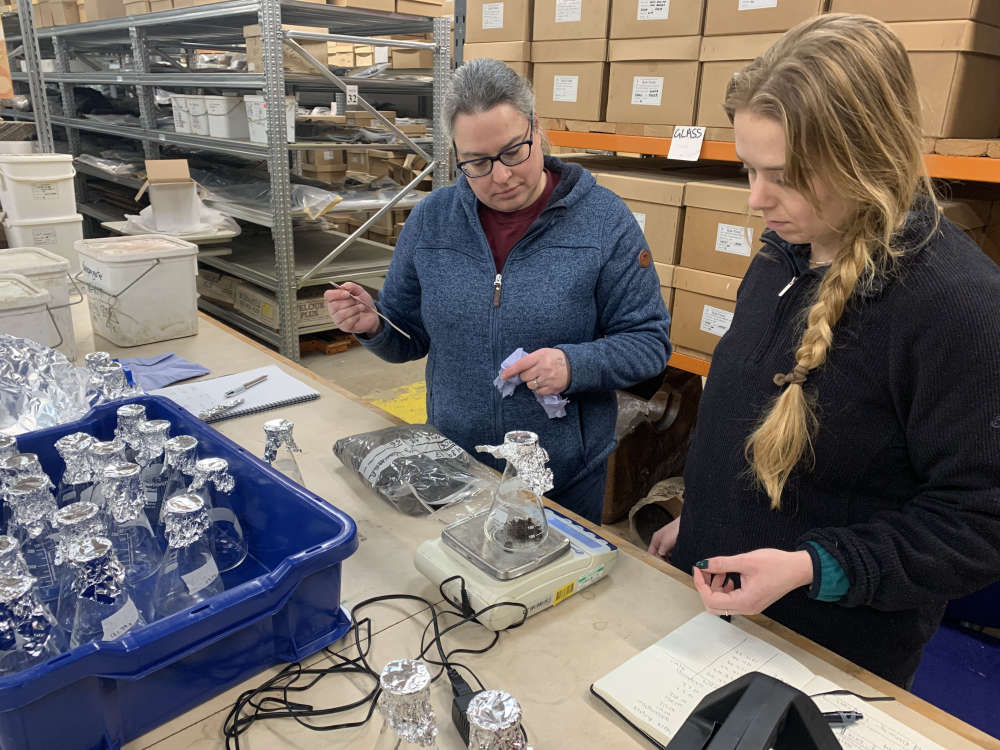
Preserving archaeology in situ has been the preferred approach to managing historical sites for a generation.
However, new research into the presence of microplastics in deposits over seven metres deep could prompt a rethink, with the tiny particles potentially compromising the preserved remains.
Research by the University of York and University of Hull, supported by York Archaeology, has looked for the first time into the prevalence of microplastics in contemporary and archived soil samples. The findings revealed microplastic particles in soil samples dating back to the first or early second century excavated in the late 1980s.
Microplastics are small plastic particles, ranging from 1μm (one thousandth of a millimetre) to 5mm. They come from a wide range of sources, from larger plastic pieces that have broken apart, or resin pellets used in plastic manufacturing which were frequently used in beauty products up until around 2020.
“We think of microplastics as a very modern phenomenon, as we have only really been hearing about them for the last 20 years, when Professor Richard Thompson revealed in 2004 that they have been prevalent in our seas since the 1960s with the post-war boom in plastic production,” comments David Jennings, chief executive of York Archaeology. “This new study shows that the particles have infiltrated archaeological deposits, and like the oceans, this is likely to have been happening for a similar period, with particles found in soil samples taken and archived in 1988 at Wellington Row in York.”
The study identified 16 different microplastic polymer types across both contemporary and archived samples. The highest level of microplastic particles, 20,588 MP/kg, was identified at the lowest sample depth (~7.35 m) at archived samples from Wellington Row, and 5910 MP/kg in the mid depth layer (~5.85 m) at the contemporary Queens Hotel site. Of the microplastics detected in sediment samples overall, polytetrafluoroethylene (PTFE), polybutylene sulfone (PSU), and polyethylene (PE:PP) copolymer polymer types were most abundant; these items were mainly of fragmented and irregular shape. These are commonly used in items from non-stick coatings (PTFE), pipes (PSU) and plastic bags (PE) to wet wipes (PP).
“Where this becomes a concern for archaeology is how microplastics may compromise the scientific value of archaeological deposits. Our best-preserved remains – for example, the Viking finds at Coppergate – were in a consistent anaerobic waterlogged environment for over 1000 years, which preserved organic materials incredibly well. The presence of microplastics can and will change the chemistry of the soil, potentially introducing elements which will cause the organic remains to decay. If that is the case, preserving archaeology in situ may no longer be appropriate,” adds David.
Professor John Schofield from the University of York’s Department of Archaeology, said, “This feels like an important moment, confirming what we should have expected: that what were previously thought to be pristine archaeological deposits, ripe for investigation, are in fact contaminated with plastics, and that this includes deposits sampled and stored in the late 1980s.
“We are familiar with plastics in the oceans and in rivers. But here we see our historic heritage incorporating toxic elements. To what extent this contamination compromises the evidential value of these deposits, and their national importance is what we'll try to find out next.”
The pilot study is believed to be the first evidence of microplastic contamination in archaeological sediment (or soil) samples. Further research into the impact of microplastics will be a priority for archaeological scientists, given the potential impact of these man-made chemicals on archaeological deposits.
The study, ‘The contamination of in situ archaeological remains: A pilot analysis of microplastics in sediment samples using μFTIR’, has been published in Science of the Total Environment.



 Meet Jay McGuinness in Waterstones in May!
Meet Jay McGuinness in Waterstones in May!
 Northern Railway says 97% of passengers agree with strategy to crack down on fare dodgers
Northern Railway says 97% of passengers agree with strategy to crack down on fare dodgers
 Mayoral election for York and North Yorkshire less than a week away!
Mayoral election for York and North Yorkshire less than a week away!
 25 Apr 2024 Reminder: Second Queen Street Bridge closure to take place this weekend
25 Apr 2024 Reminder: Second Queen Street Bridge closure to take place this weekend
 Brick pavements and medieval rubbish dump – fascinating things uncovered at York Station Gateway
Brick pavements and medieval rubbish dump – fascinating things uncovered at York Station Gateway